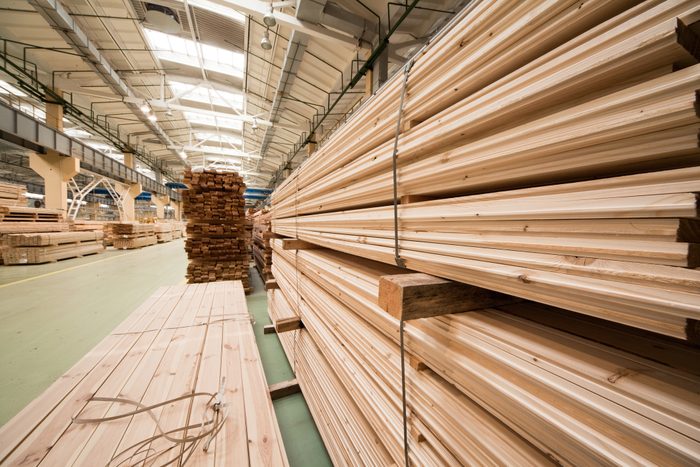3 Reasons Why There is a Lumber Shortage

Lumber supply in the United States is constricting heading into winter. Here's why.
Supply chain issues have caused shortages of products and goods across the globe since the onset of the coronavirus pandemic. Still, very few commodities have had as much of a rollercoaster ride over the last year-and-a-half as lumber. Lumber was in short supply for much of 2020 and 2021, driving prices to historic levels, before leveling off this past summer as supply finally caught up to demand. The lumber supply is beginning to tighten once again and prices are trending upwards in response. Here are the three main factors currently limiting the supply of lumber in the United States.
Wildfires
The past year has been brutal for Canadian forests, particularly in British Columbia where hundreds of wildfires raged over the summer. This was particularly bad news for the lumber supply in North America, as three of the continent’s six largest lumber producers are located in British Columbia. The wildfires significantly stifled lumber production across the province. One major lumber producer, Canfor, was forced to cut back on the production of approximately 115 million board feet of lumber due to the fires.
“The wildfires burning in Western Canada are significantly impacting the supply chain and our ability to transport product to market,” said Stephen Mackie, executive vice president of North American Operations at Canfor. “As a result, we are implementing short-term production curtailments at our Canadian sawmills beginning July 26.”
Wildfires are not only impacting Canadian lumber production. The entire Pacific Northwest, including Oregon and Washington, also saw large areas hit by wildfires for most of the summer. By Aug. 15, 2021, more than one million acres of land across Washington and Oregon were on fire.
Looking back again to 2020 and it’s pretty🤔amazing to see where we were at on August 15, 2020 🆚 August 15, 2021.
2020 — 37 fires (52,543 acres) ↗️ 2021 — 77 fires (1,053,936 acres).
🔥NWCC Blog: https://t.co/5gEciPMiTV pic.twitter.com/3tZfPzfkjV
— Northwest Interagency Coordination Center (@NWCCInfo) August 15, 2021
Sawmill Production
Wildfires were not the only factor that limited sawmill production in 2021. While sawmills in the northwest contended with wildfires, mills in the southern United States had an entirely different logistical issue to contend with: the labor shortage. Sawmills have had an especially hard time convincing workers to come back in the wake of the pandemic. Ironically, high lumber prices and the added profits that come with them have put sawmills in a tough spot.
“Wood demand exploded and sent lumber prices and sawmill profit margins soaring,” Henry Spelter, a partner at Forest Economic Advisers told the Washington Post. “To take advantage of these rare and extraordinarily favorable markets, mills have had to pony up enough money to make it worthwhile for their people to return to the workplace.”
In order to take advantage of the current lumber demand, sawmills need workers. That simple fact gives workers leverage to ask for wage increases before they go back to work. Until this stalemate is resolved, lumber production will be hampered.
Continued Demand for Housing
The main reason for the high demand in lumber is the unprecedented demand for housing in the United States. People want to buy new homes, and new homes require lumber (and lots of it). Unfortunately, the shortage of housing is something experts predict will not go away any time soon.
“Of all the shortages afflicting the U.S. economy, the housing shortage might last the longest,” researchers from Goldman Sachs wrote in a recent report.
According to the Wall Street Journal, the United States’ housing market is just under four million single-family homes short of what it needs to meet the current level of housing demand. As long as massive demand for housing (and provided current construction techniques do not change drastically) exists there will be a similarly high demand for lumber. Unless the issues causing supply constraints are ironed out, it will be tough for lumber supply to catch back up to demand any time soon.


